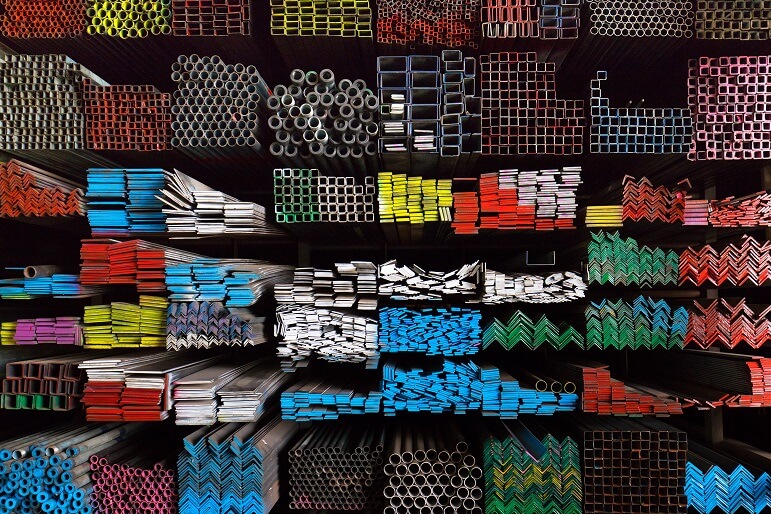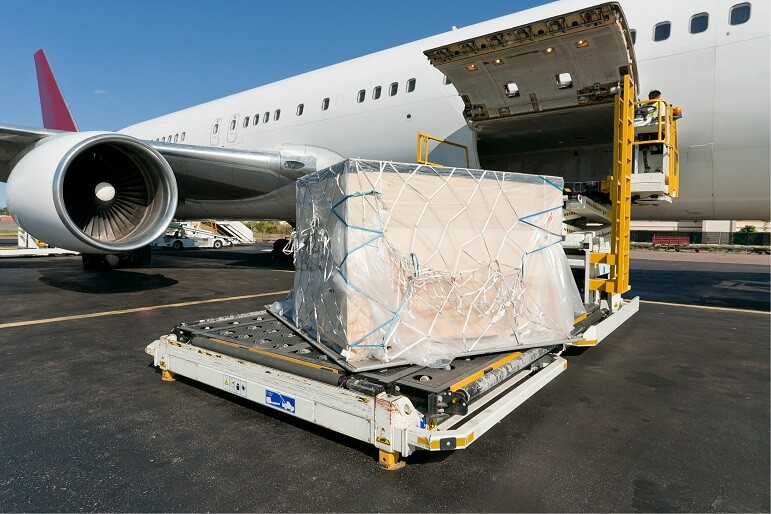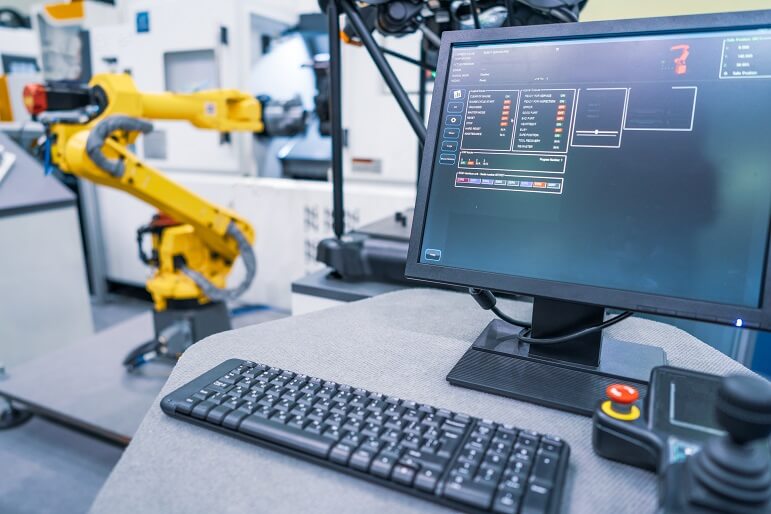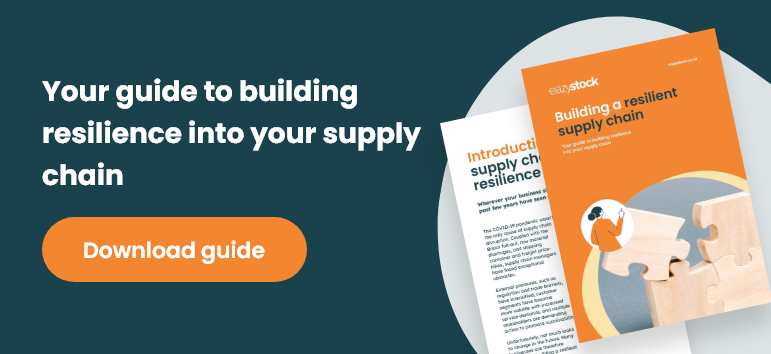2023 supply chain and logistics management trends
The supply chain world has been rocked repeatedly over the past few years due to global issues such as the Covid-19 pandemic, shipping container shortages, catastrophic weather events, and socioeconomic issues – many outside our control.
Keeping business going has been a significant challenge for companies without robust supply chains or contingency plans.
To make it easier, supply chain professionals must understand potential risks to mitigate their impact.
As we step into the unknown of 2023, here are some key trends and issues affecting supply chain management to help you prepare your strategies.
Supply chain issues
The global cost-of-living crisis is impacting buying power and spending – and not just for your customers.
The economic turndown is threatening a global recession over 2023, and labor disputes and strikes are prevalent. The averted US rail strike in December 2022 would have been catastrophic for US residents and the wider supply chain.
As costs increase with inflation at its highest in over 40 years, now is the time to review your current situation to understand where you can improve efficiency or reduce costs.
If you’re buying raw materials or components, review your bill of materials to see if it’s possible to substitute materials or items for cheaper options or source from alternative suppliers.
Review your stock levels to identify SKUs where you could reduce order levels since you know demand will fall. ABC/XYZ analysis can help identify the most valuable items to your business.

Getting the basics right
Improving forecast accuracy
Accurate demand forecasts can help you stay on top of inventory and improve strategic planning for different risk scenarios. A key element is setting the right safety stock levels to meet unexpected spikes in demand without tying up unnecessary capital. This will also enhance customer experience as you’ll have enough stock to meet customer demand.
Poor forecasting brings a high risk of stockouts or excess and obsolete stock. It can also make it harder for suppliers if you realize you’ve underestimated and need an urgent order.
Demand forecasting software can integrate with your ERP or business system to automatically generate a demand forecast that considers demand variance, seasonality, trends and promotions. Combining improved forecasts from the software’s algorithms with appropriate safety stock levels allows you to mitigate risks and maintain good service levels.
You can read more about demand forecasting techniques in our article.
Increased supply chain visibility
Supply chain visibility, such as being able to track items from leaving your supplier to arriving in your warehouse and being delivered to the customer, facilitates a smooth supply chain.
Digitalizing the supply chain and implementing new technologies provides easier access to vital information to ensure an efficient and dependable supply chain.
While one piece of software won’t bring you complete visibility, you can implement different solutions based on business needs. For example, you could implement demand forecasting and inventory optimization software first, then connect additional relevant technologies such as artificial intelligence, the Internet of Things, and machine learning as your business grows and more budget becomes available.
Connecting the different tools to your ERP system allows you to access more information at various supply chain stages. For example, one tool updates your ERP system with a delivery time, which the ERP then sends to your inventory optimization software. This new information allows the inventory optimization software to let you know if you can still meet your orders or if there’s a risk of running out of stock.
Being able to respond quickly and maintain your customer service levels can give you a competitive advantage over those who aren’t prepared.
Supplier management
Supplier ranking
Even the best inventory management systems and processes will fail without a robust supply chain. If your suppliers can’t deliver what you need when you need it, customers will move to your competitors.
You should understand lead times, prices, location, minimum order quantities, quality, compliance, environmental considerations, dependability, and alternatives for each supplier. While you will need to do some of this manually, entering supplier lead times and costs into inventory optimization software will allow the software to recommend the best supplier to deliver your order on time and at the lowest cost.
Building strong supplier relationships can also help when there is disruption, as they could be more likely to prioritize you over their other customers.

Reshoring and nearshoring
As recent supply chain disruption showed, bringing in items from cheaper suppliers further away than more expensive local suppliers caused problems. These were exacerbated by shipping container shortages and delays in processing goods through ports.
Reshoring or nearshoring can reduce issues caused by shortages or blockages, particularly for manufacturers. We have also seen US companies relocating their manufacturing plants to the US, Mexico or other close countries from China or other Asian countries.
Some companies are setting up bilateral supply chains. For example, Honda has one supply chain to support the Chinese domestic market and a separate one to serve other markets.
Buffers
Buffers are practices that might be outside of usual working practices that you can use to fulfill high demand.
You could use an inventory buffer, such as safety stock, where suppliers have long lead times or customer orders are erratic.
A capacity buffer such as express orders, using air freight instead of sea, paying overtime or bringing in temporary staff can help when you’re struggling to meet demand.
A time buffer should be a last resort when you delay sending the goods to your customer. If you let your customer down, they’ll find an alternative.
Supply chain digitalization
Digital supply networks can help build resilience and reduce the impact of supply chain disruption. Technological advances are bringing more opportunities to enhance the traditional supply chain.
Software
Cloud-based software-as-a-service (SaaS) solutions offer dependable and secure options for companies looking to digitalize their supply chains. Most solutions can connect to existing ERP or business systems to bolster supply chain processes and inventory management.
Adding specific inventory modules to your existing ERP can allow you to manage your suppliers, improve forecast accuracy, set inventory buffers and safety stock levels, classify your stock and automate your inventory management processes.
Automation and artificial intelligence
Automation can help with tasks that might involve risk to a person, such as carrying heavy items through a warehouse or fetching items from high shelves. It can also increase manufacturing speed and improve process efficiency by immediately processing high levels of data.
Artificial intelligence (AI) enables systems to learn to carry out tasks or complete processes over time, finding more efficient and effective ways. The algorithms used by AI provide better quality data and analysis of supply chains to enable better-informed decisions.

Machine learning is a subset of artificial intelligence that uses algorithms, software or systems to learn and adjust without specific programming intervention from a human. Machine learning analyses trends, recognizes anomalies and offers insights.
You will gain more supply chain visibility by connecting your ERP system to demand forecasting and inventory optimization software. This can then be enhanced by adding AI-enabled software and devices. The better informed you are, the more chance you have of making the best decisions regarding stock levels and operating costs.
We discuss the use of artificial intelligence and machine learning in our article.
Internet of Things
The Internet of Things (IoT) connects devices or objects to a digital network so that they can be globally monitored.
There are many applications for IoT devices across the supply chain that can send information back to your central warehouse or business system from supplier shipping to customer delivery. You might already be using devices such as smart sensors or RFID tags to record products in your warehouse.
Using connected devices in warehouses can increase efficiency and safety. Real-time location trackers allow employees to find items quickly and easily. Combined with automation, artificial intelligence or robots, they can plan the fastest and safest pick routes.
Blockchain
Similar to the Internet of Things, Blockchain provides more transparency throughout the supply chain by integrating different supply chain elements into one platform.
Different parties throughout the supply chain, such as carriers and logistics providers, can use the same platform to update other parties, raise invoices, and send payments.
Cybersecurity
Cybersecurity threats remain an increasing concern across the supply chain. From data hacks to holding systems hostage, cyberattacks can derail supply chains in seconds.
If you haven’t already, assess the risk throughout your digital supply chain and ensure you can protect yourself from attacks. Decide how to mitigate any risks and communicate your response plan to all relevant internal and external parties.
Review your processes regularly to maintain security levels and consider new practices and security methods.

Inventory management practices
Moving from reactive to proactive
While dealing with recent supply chain disruptions, many companies switched their inventory management strategies from lean, just-in-time strategies to just-in-case. Increasing capital expenditure on extra stock ensured they could still meet demand in case of further disruption.
It’s likely that in 2023 we will see a shift back to lean inventory management as demand returns to pre-pandemic levels. With the economic downturn and a likely recession, demand will probably fall even further.
We’ve discussed the advantages and disadvantages of just-in-time and just-in-case inventory management in our blog post, where we advise taking the benefits of both.
For example, accurate demand forecasting techniques allow you to combine the safety stock used in just-in-case with capital management from just-in-time. Rather than guessing the level of required safety stock, you can calculate a cost-effective level that reduces the chance of stock becoming obsolete.
Sustainability
Climate change and the prevalence of natural disasters put sustainability high on consumer agendas. Nearshoring suppliers and digitalizing the supply chain to improve efficiencies can support a greener supply chain.
Two key areas are green supply chains and the circular economy.
Green supply chains
Review power and transportation use to become more environmentally responsible, as these will be the most significant contributors to CO2 emissions.
Using software to improve your forecast accuracy can reduce your carbon footprint. You can reduce your reliance on rushed air freight orders by ordering smarter and more accurately.
A better order structure means your suppliers get timely, consistently sized order information to help them combine your orders into batches to reduce the number of shipments. Software can also help you fill shipping containers so you aren’t shipping half-empty containers around the world.
Some other ways to make your business eco-friendlier include installing specialist or insulated doors, upgrading lighting to LEDs, recycling, bringing in alternative packaging options, and adding electric vehicles into your fleets.
The circular economy
The circular economy can help with sustainability and saving money. As the price of raw materials increases, companies can break down their finished products and return them to their raw material form for reuse or resale.
Gartner recommends that companies get involved in product design early to input the material. You should also consider how you can support your customers to extend their product’s life. For example, product repair and maintenance services. Finally, consider forming circular economy partnerships.
Shipping will get back on track
Following extensive disruption to shipping due to shopping container shortages and delays in processing in ports, it’s expected that in 2023 there will be new fleets of ships. Increasing ships’ capacity could see container rates decrease, making shipping cheaper.
Sea-Intelligence says that around half of the shipping industry’s congestion is resolved, and the recovery pace is increasing. We should be back to the ‘normal’ 2% capacity loss baseline by early 2023, assuming no new major supply chain disruptions.
Further information
Get in touch with our team for more information on how EazyStock can help you with these trends and overcome supply chain issues.







